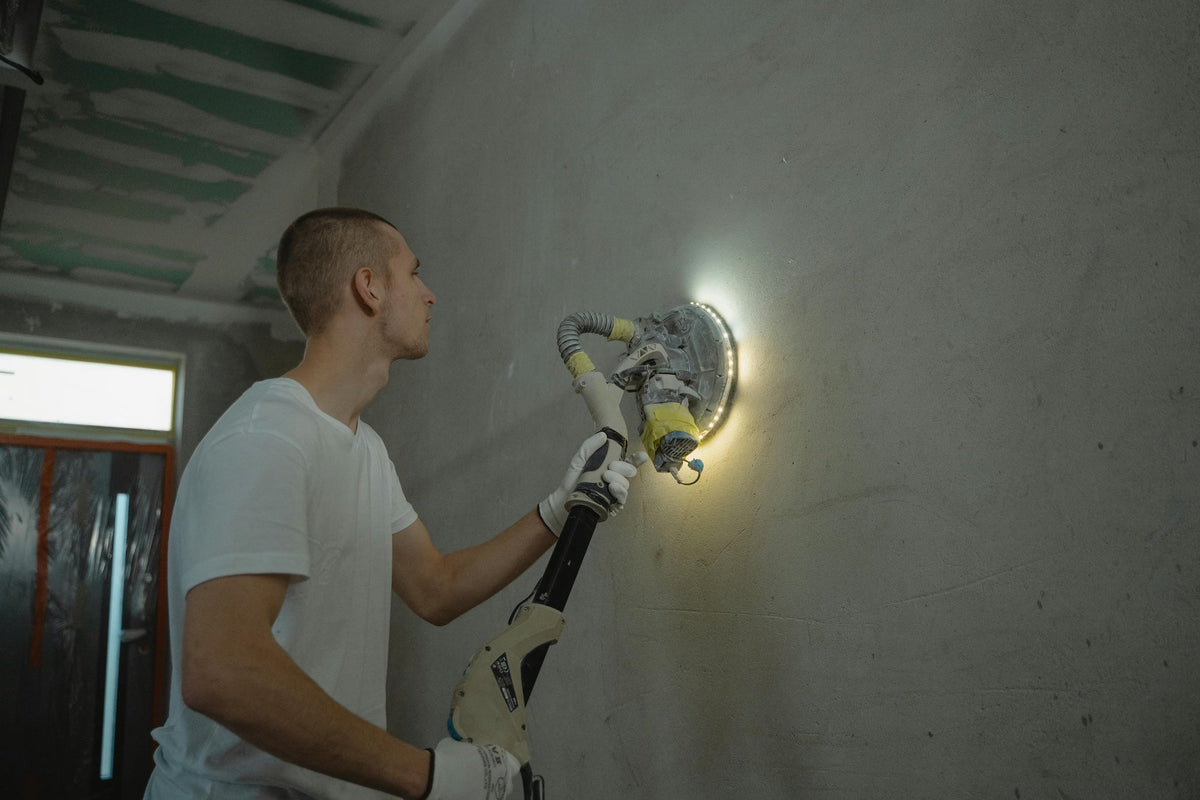

Technology is changing the way painting professionals estimate jobs and manage projects. Traditional methods of measuring spaces, calculating material costs, and generating quotes have often been time-consuming and prone to human error. However, the emergence of smart tools is streamlining these processes, making them faster, more accurate, and highly efficient.
Smart Scanning
The latest generation of smart scanning tools is revolutionizing the painting industry by providing precise, data-driven insights for job planning and execution. These advanced devices utilize laser measurements, 3D imaging, and AI-powered software to conduct a comprehensive assessment of a job site within minutes. By capturing room dimensions, surface areas, and even subtle texture variations, these tools create highly accurate digital models that eliminate guesswork. These dimensions can the be used to calculate the exact amount of paint, primer, and other materials required, optimizing efficiency and reducing waste. This not only saves time but also prevents costly errors from under or overestimating material needs, improving overall project profitability.
Among the most popular tools for 3D scanning are Polycam and Matterport , both of which generate detailed digital twins of spaces. These platforms are widely used by contractors, architects, and painters to streamline workflows, enhance accuracy, and ensure seamless project execution.
Real-Time Price Quotes and Automated Estimates
Software is also transforming the estimating process for painting professionals by integrating with cost estimation software to generate instant, highly accurate price quotes. These advanced solutions pull in real-time data on material costs, labor rates, surface area measurements, and job-specific variables, ensuring pricing is both precise and transparent. By eliminating manual calculations and reducing the risk of human error, these tools allow painters to provide clients with immediate, professional quotes, increasing trust and confidence in their services.
With automation streamlining the quoting process, painting contractors can respond to inquiries faster, improving their chances of winning bids while maintaining competitive pricing. Many systems also allow for customization, enabling professionals to adjust estimates based on project complexity, preferred materials, or additional services like surface prep and specialty coatings.
Popular automated quoting tools include Jobber , a comprehensive business management platform with built-in estimating features; PlanSwift , a takeoff and estimating tool designed for construction and painting professionals; and PaintScout , a specialized estimating software tailored specifically for painting contractors. By leveraging these tools, painters can boost efficiency, improve accuracy, and enhance their overall customer experience.
Improved Project Scheduling and Workflow Management
Beyond estimating, technology plays a crucial role in streamlining project scheduling and overall workflow management. Modern platforms integrate with scheduling software to help painting contractors allocate labor efficiently, track project progress in real-time, and identify potential delays before they become costly issues. By automating task assignments and syncing schedules across teams, these tools improve coordination, minimize downtime, and ensure that every job stays on track.
Cloud-based tracking and digital reporting further enhance project oversight, allowing contractors to monitor job progress from anywhere. With features like GPS-enabled crew tracking, time logs, and automated updates, managers can stay informed about productivity levels, completed tasks, and material usage. This level of transparency not only improves efficiency but also helps maintain budgets and meet deadlines with greater accuracy.
Top tools include Buildertrend , powerful construction and project management software that provides real-time scheduling, job progress tracking, and team collaboration features as well as Houzz Pro , specialized tool for contractors, including painters and remodelers, that combines scheduling, client management, and project tracking.
The Future of Painting with Smart Tools
As technology continues to evolve, smart tools will become an even bigger asset in the painting industry. From AI-powered color matching to automated paint application systems, the possibilities are endless. Autonomous painting robots are also making their way into the industry, capable of handling large-scale projects with precision and speed. These robots use AI, 3D scanning, and robotic arms to apply paint evenly, reducing labor demands and ensuring consistent results. By embracing these innovations, painting professionals can improve efficiency, reduce costs, and enhance the overall customer experience while staying ahead of industry advancements.

